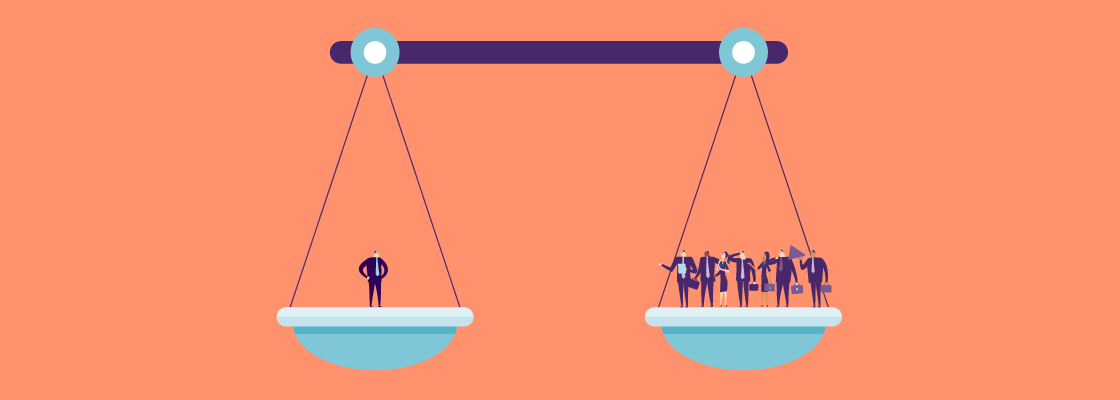In response to the significant economic and social impact from the coronavirus, the Federal Government has launched the ‘JobKeeper’ scheme – a $130 billion initiative which encourages employers to keep Australian employees in jobs.
Prime Minister Scott Morrison said: “We will give millions of eligible businesses and their workers a lifeline to not only get through this crisis but bounce back together on the other side.”
“This is about keeping the connection between the employer and the employee, and keeping people in their jobs even though the business they work for may go into hibernation and close down for six months,” he said.
What does this mean for businesses?
The scheme will operate as a wage subsidy to be paid by the Australian Tax Office (ATO) directly to employers of $1500 per fortnight for each eligible employee. The payments will cover a six-month period from 30 March 2020, with the first payments to be made in May and backdated.
Employers will be eligible for the subsidy if:
- their business has a turnover of less than $1 billion and their turnover will be reduced by more than 30 per cent relative to a comparable period a year ago (of at least a month); or
- their business has a turnover of $1 billion or more and their turnover will be reduced by more than 50 per cent relative to a comparable period a year ago (of at least a month); and
- the business is not subject to the Major Bank Levy.
Also, the employer must have been in an employment relationship with eligible employees as of 1 March 2020 and confirm that each eligible employee is currently engaged to receive JobKeeper payments.
Not-for-profit entities (including charities) and self-employed individuals (businesses without employees) that meet the turnover tests that apply for businesses are eligible to apply for JobKeeper payments.
And for employees?
Employees will be eligible for inclusion in the payment scheme if they are over 16 years of age, were currently employed as at 1 March 2020 (including those stood down or re-hired), and are:
- full-time, part-time, or long-term casuals (a casual employed on a regular basis for longer than 12 months as at 1 March 2020), are an Australian citizen;
- the holder of a permanent visa, a Protected Special Category Visa Holder, a non-protected Special Category Visa Holder who has been residing continually in Australia for 10 years or more, or a Special Category (Subclass 444) Visa Holder; and
- are not in receipt of a JobKeeper payment from another employer.
If your employees receive the JobKeeper payment, this may affect their eligibility for payments from Services Australia as they must report their JobKeeper payment as income.
What do I need to do as an employer?
Businesses will have to do the following to receive JobKeeper payment(s):
- register your intent to apply with the ATO
- assess if turnover has or will reduce by 30%
- at a future date (not yet published), apply online via the ATO
- in the application, provide information on all eligible employees to the ATO, and then do so each subsequent month that the payment is to be claimed. The ATO will pre-populate employee details using Single Touch Payroll data
- ensure that each eligible employee is paid a minimum of $1500 per fortnight (before tax), or top-up pay to that level if income has been reduced below that level
- inform all eligible employees that they are receiving the JobKeeper payment.
Employers can, but do not have to, pay superannuation on any additional (top-up) wage paid because of the JobKeeper payment. As an example, where an employee is currently paid $1000 in wages, but will receive $1500 moving forward as a result of the Jobkeeper payment, $1000 is still considered wages (upon which superannuation is payable) and the additional $500 is considered to be the Jobkeeper payment upon which superannuation is voluntary.
The eligibility for individual employees is open; employers must continue to employ staff who were employed as of the 1 March 2020 and can re-engage any employees stood down or retrenched, and then ensure each employee is paid at least $1500 per fortnight.
Employees who are not re-engaged, or where their income drops below the income threshold for the JobSeeker payment, will continue to be eligible for the JobSeeker payment plus the Coronavirus Supplement Payment from Centrelink
For further information about the JobKeeper wage subsidy, read this fact sheet.
The JobKeeper wage subsidy scheme may have a significant impact on your workforce planning over the next six months. To discuss your options and how your business can benefit from this scheme please phone contact the team at HR Assured.
For more information about COVID-19, you can also visit HR Assured’s dedicated landing page which supports business owners and HR managers. The content on this page aims to address some sensitive issues many businesses are facing in these uncertain times.




